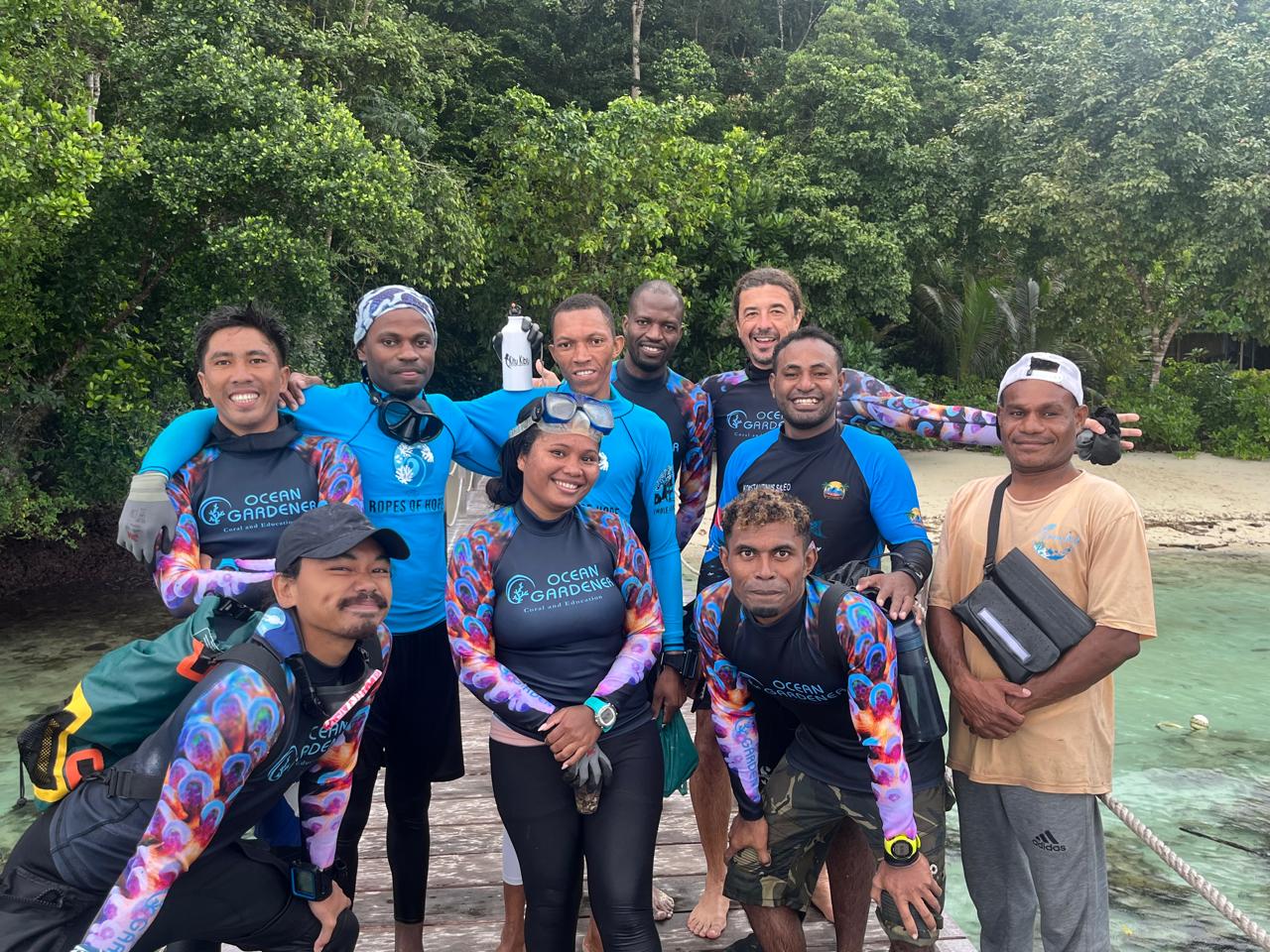
First of all, this experience is unique as it is a collaboration between Ocean Gardener (the designer of the course) and Sea People (the host of the course). With students from the Ocean Gardener scholarships made possible by the McPZ Foundation, students from the Anambas Foundation, The Ropes of Hope participants with financial support from SMILO. We would like to thank all organizations in making this wonderful experience happen.
Coral Restoration Training starts!
Vincent and I arrived in Sorong in Raja Ampat, Indonesia. We were welcomed by Arno, the founder of The Sea People, a local coral restoration NGO primarily based in Yenbekewan Village on Mansuar Island in Raja Ampat, Indonesia. The course students then arrived one by one from their various countries/islands. Together, we sailed to across Raja Ampat on the Galaxea, Sea People’s floating home base, on which they conduct their coral restoration dives, coral research and training activities.
For this course, we had 7 scholarship recipients – Piet and Corri (who work with The Sea People), Constan (a homestay and dive center owner based in Dayan, Batanta, Indonesia) and Rahman (our second Anambas Foundation member). We also had our Tanzanian scholarship recipients – Paschal (a Ranger for the Mafia Island Marine Protected Area), Miki and Atibo (from The Ropes of Hope, an NGO based also on Mafia Island, Tanzania).
Our training here in Raja Ampat will be different from our usual Bali-based course. For this course, we sailed across the waters of Raja Ampat, learning and restoring corals in various areas with various coral conditions. Overall, we stayed a full month on the Galaxea. The trip from Sorong to Yenbekwan took us about 10 hours, and finally we were safely moored around Yenbekwan on Sunday 3rd August 2025.
First Week – Introduction to coral biology and identification
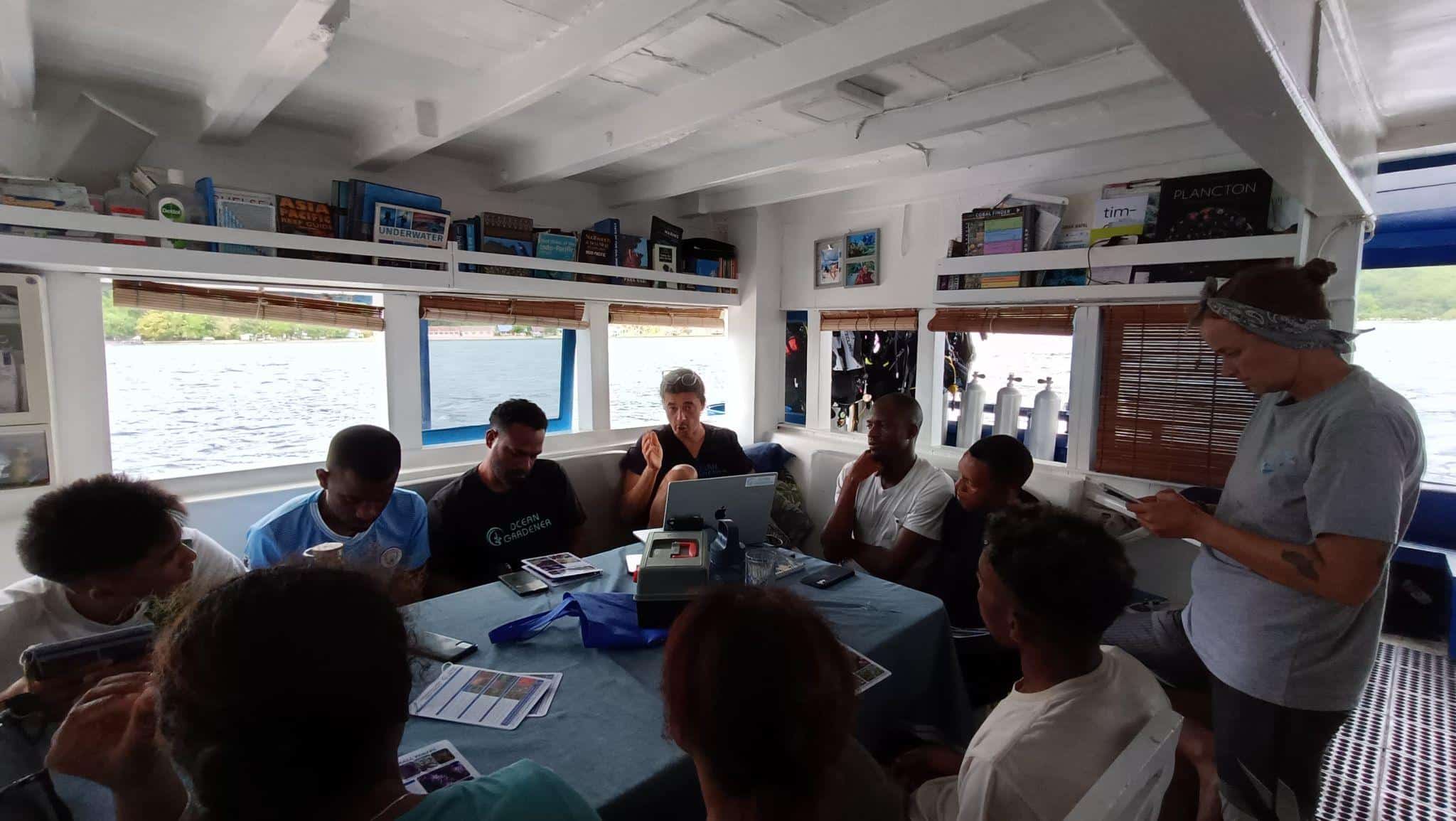
The first week is all about learning about the different types of corals, where they live, the conditions they thrive in and how to identify them. Selecting the right type of coral for a restoration project is the most critical determination of success.
The course started with a coral identification in the first week, learning and exploring through the waters of Mansuar. We dived all across Yenbuba, Yenbekwan, Otdima, Crossover, Ransiwor, and Kurkapa, discovering the full spectrum of coral genus’s common to the area. We taught the students both theoretical and practical skills – about the key to identifying all the different corals types we use to restore the coral reefs. In the first week, we also taught the students about other layers of a thriving reef like giant clams, anemones, clownfishes, seafans and gorgonians! The various inhabitants of the reefs come together to ensure a functioning eco-system.
We finished the first week by making cement cookies for the coral fragments that we will be placing in the nursery the following week.
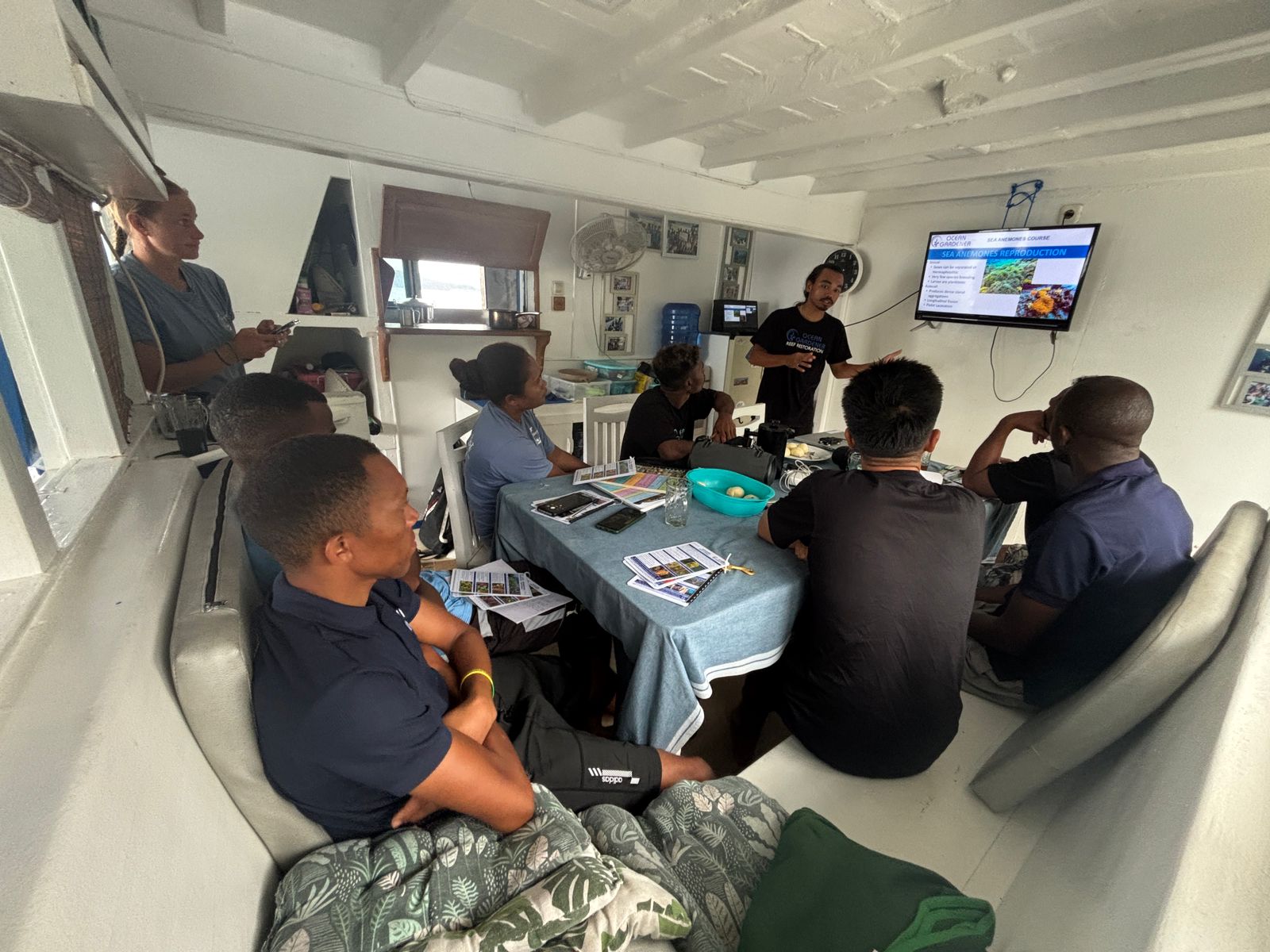
Second Week – Learning to plant corals with reef spiders
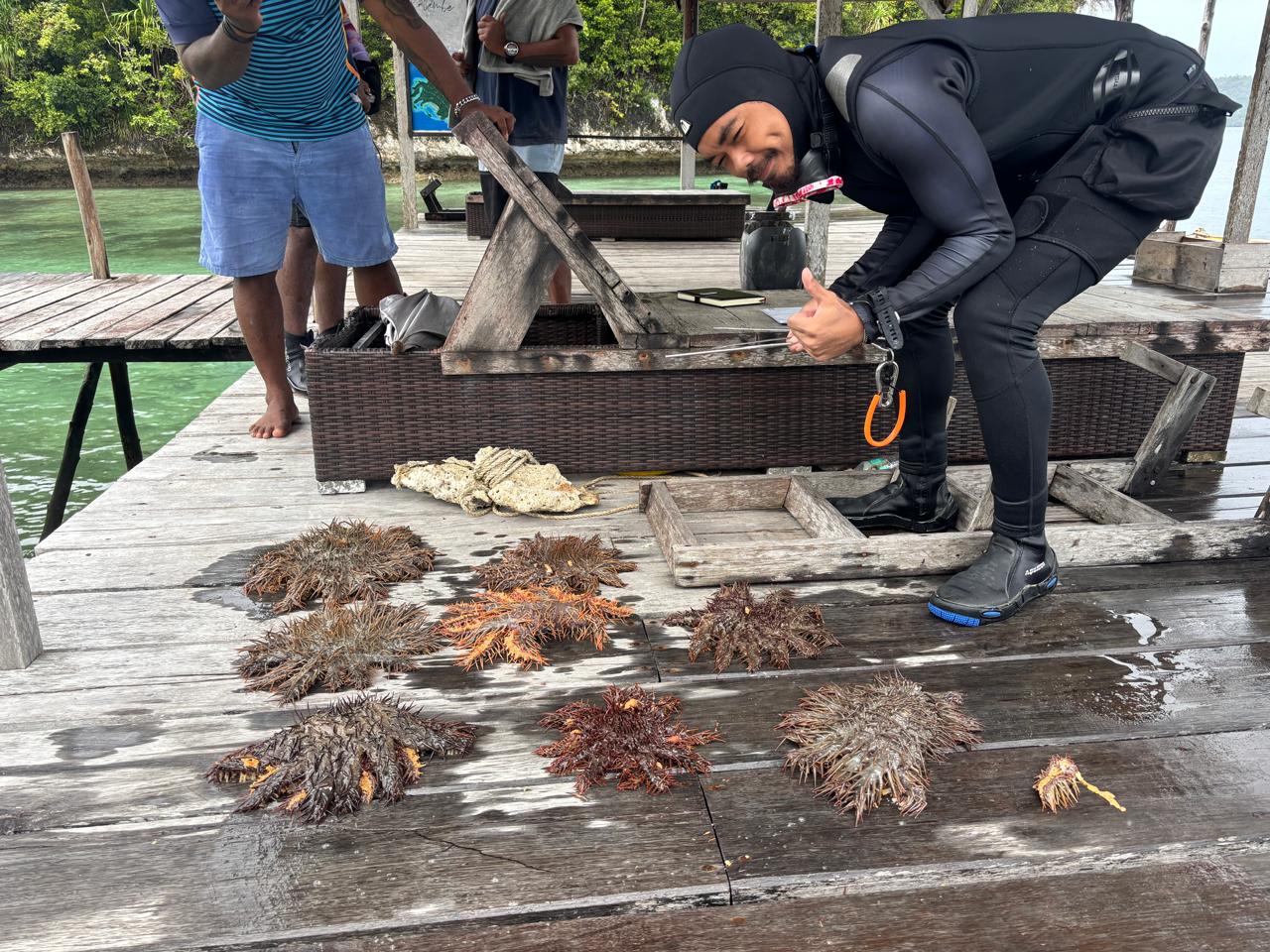
The second week is when the coral gardening starts. We moved to Saporkren and moored ourselves inside a bay, completely protected from the wind and waves. Here, we installed some reef spiders and outplanted some fragments using both epoxy and cement on the house reef of Raja Ampat Eco Lodge. We also dived at Katembe and removed some Crown of Thorn Starfish eating the corals on the house reefs. In total, we placed 7 spiders and outplanted 384 fragments using both the epoxy and cement methods.
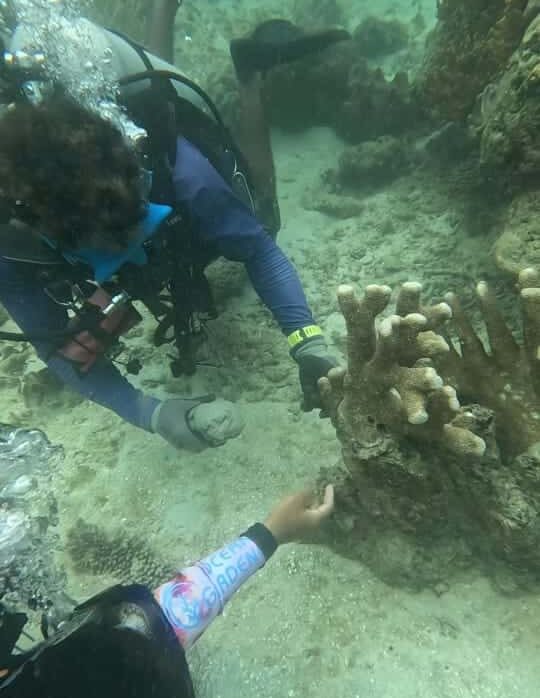
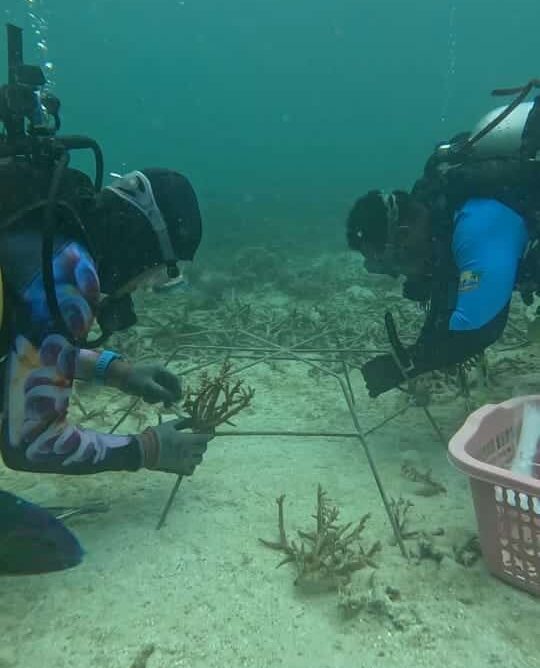
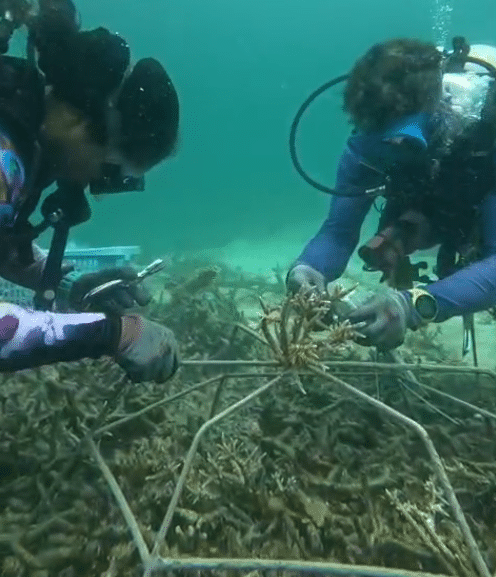
Third Week – Practicing Other Coral Restoration Techniques
For the third week, we moved back to Yenbekwan to practice more techniques of coral restoration. We chose this site because it has been partially restored by The Sea People, mainly using the Mesh Substrate Stabilization Method. Mesh stabilization in coral restoration is a technique that uses wire mesh to secure loose coral rubble on the seafloor, creating a stable foundation for new corals to settle and grow.
Here we placed the nursery rack that we made in the first week, together with 40 cement cookies. We also created a rope nursery section, consisting of 45 ropes with 20 coral fragments per rope. We also deployed a 150 square meter mesh structure with two stick and rope nurseries.
In total, we managed to plant 1713 fragments, either out-planted onto the surrounding reefs or placed in the coral nurseries. That’s only just in Yenbekwan! In this week , we also covered Rapid Reef Assessment – a technique that can be used to quickly assess the condition of the reefs and what action we should take. This quick method allows both professional and citizen scientists to quickly collect data that can be compared and collated to track a reef’s progress or deterioration.
We did a couple of rapid reef assessment dives around the waters of Merpati and Augusta Islands, Indonesia.
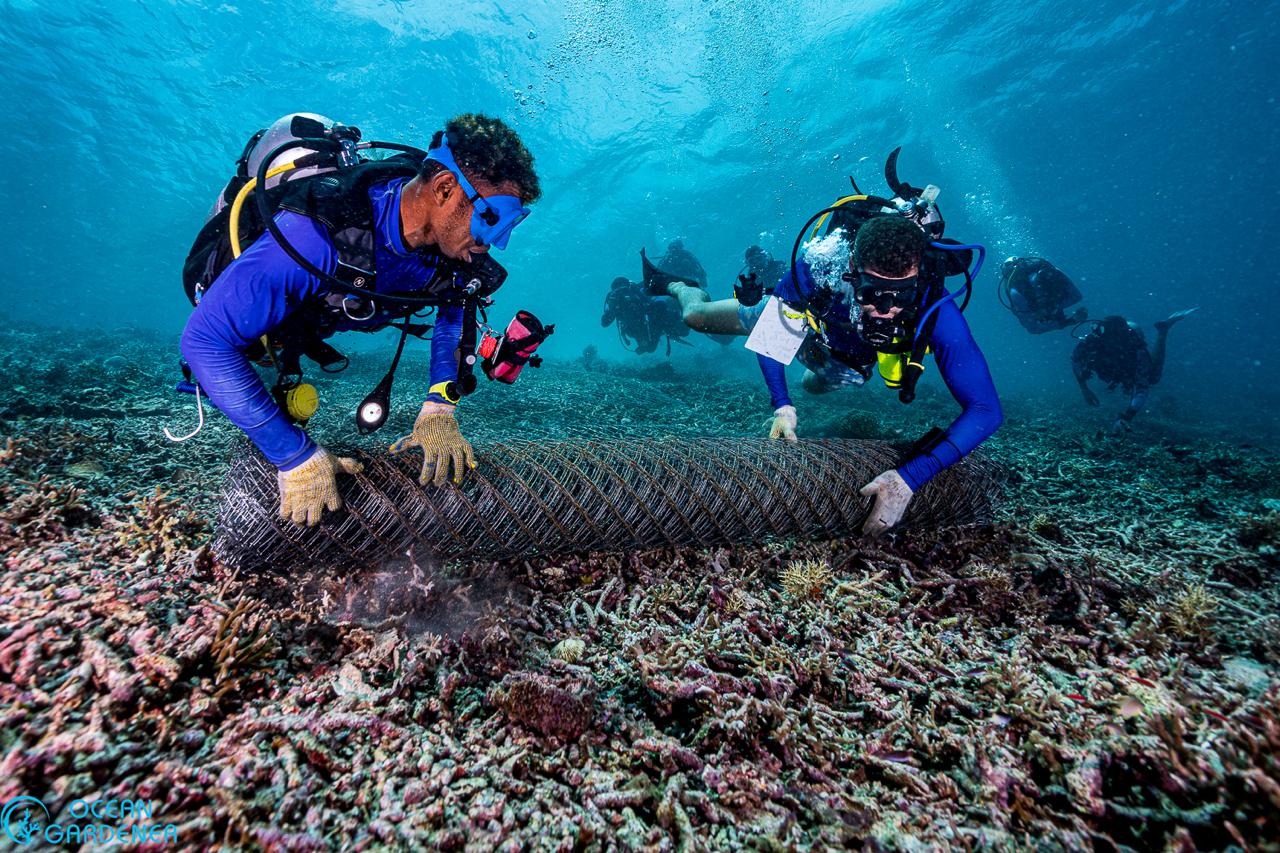
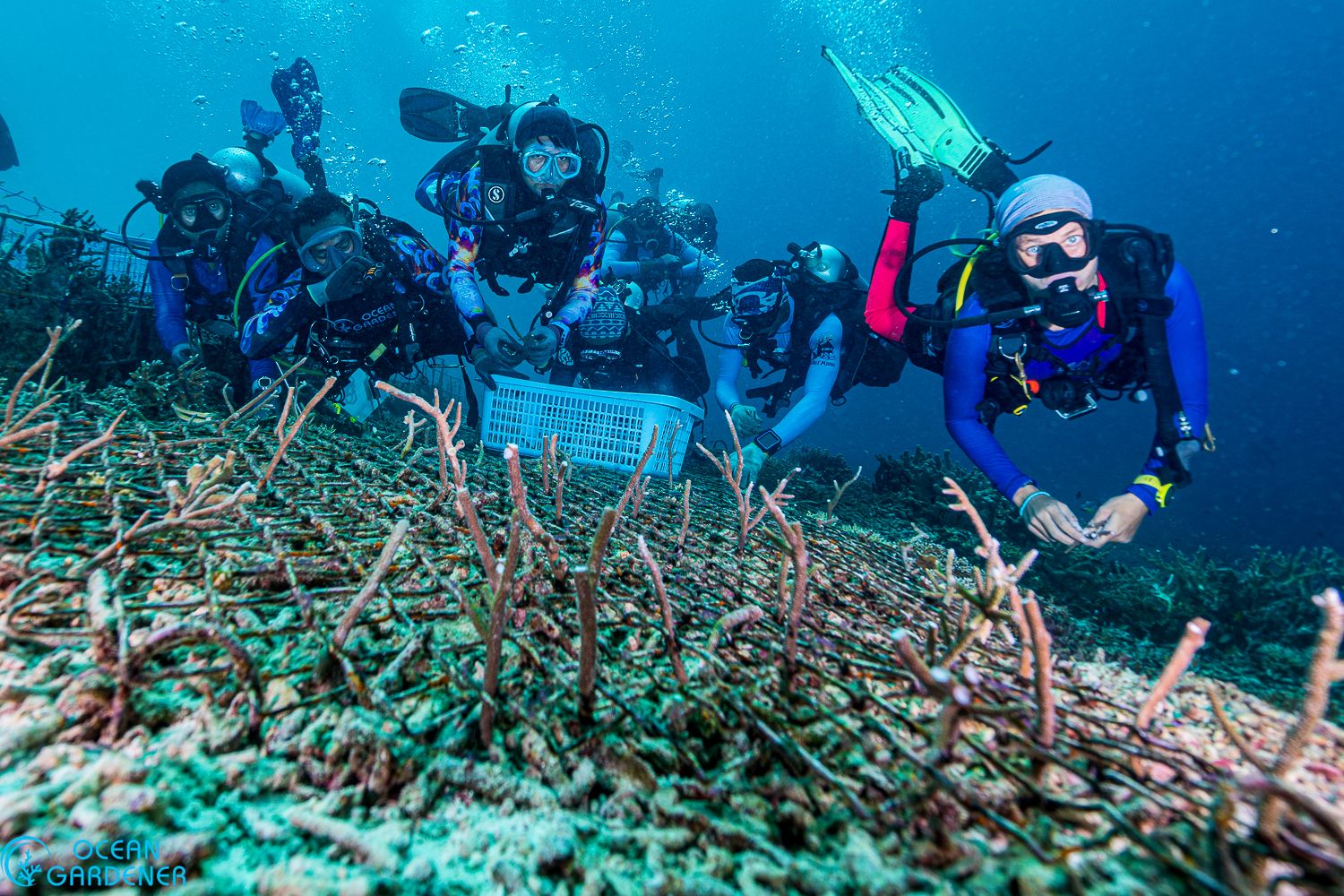
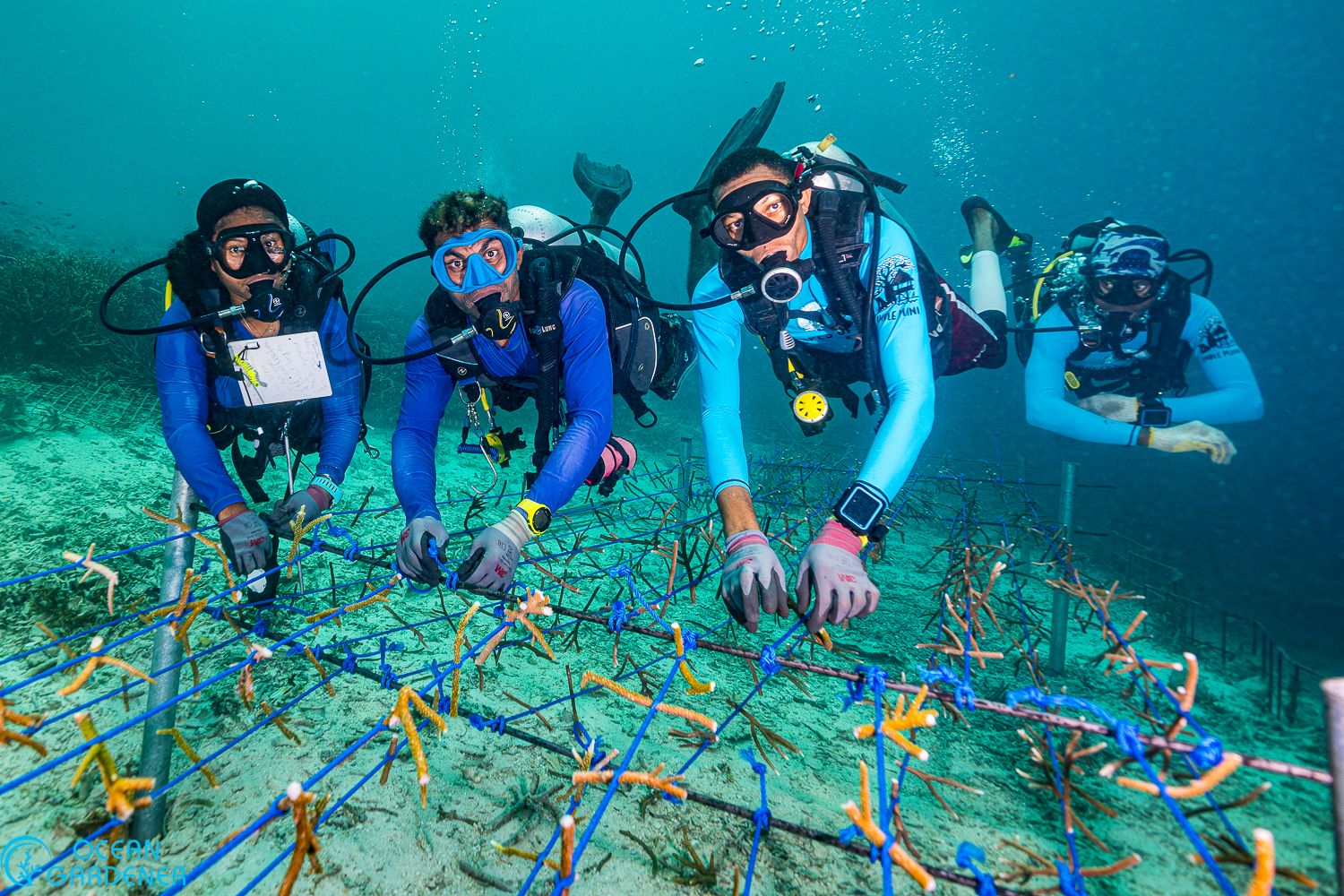
Fourth Week – Ins and Outs of maintaining a coral restoration site.
During the fourth week, we mainly focus on the monitoring of coral reefs, an often forgotten task in coral restoration. Most people think you plant the corals and walk away. The new coral fragments are highly susceptible to algae overgrowth and predation and need to be protected. We go over maintenance and monitoring tasks. Regular monitoring of a coral nursery or restoration site allows you to quickly identify problems and rectify them.
For this special week, we spent a week in Dayan, a small island near Batanta in Raja Ampat, Indonesia. This is where one of our course attendee, Constantinus, created a small but lively homestay, where he also focused on conservation. The reef outside is degraded, mainly because of the heavy storm, huge swell, and also the lack of waste management from the surrounding homestays. The human waste lowers tjhe coral’s immunity, making them susceptible to coral diseases. The nutrients also feeds algae, causing them to smother the corals. You can find out more about the detrimental effects of untreated human waste on reefs in our wastewater article. The reef here was killed off. Hence Constan has experienced massive coastal erosion on his island as the reefs that once protected the island from storm surge does not exist anymore.
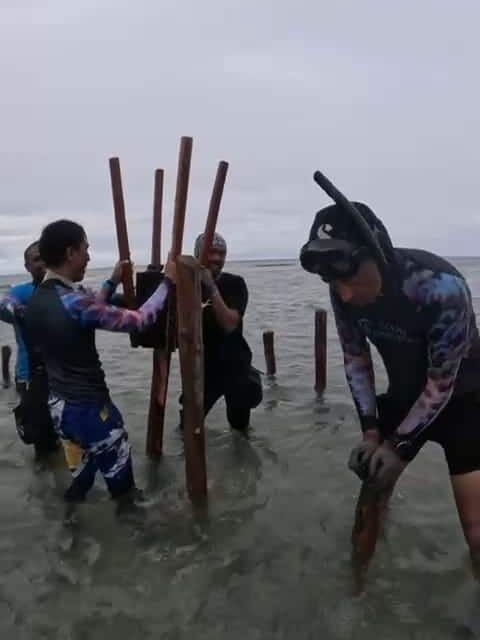
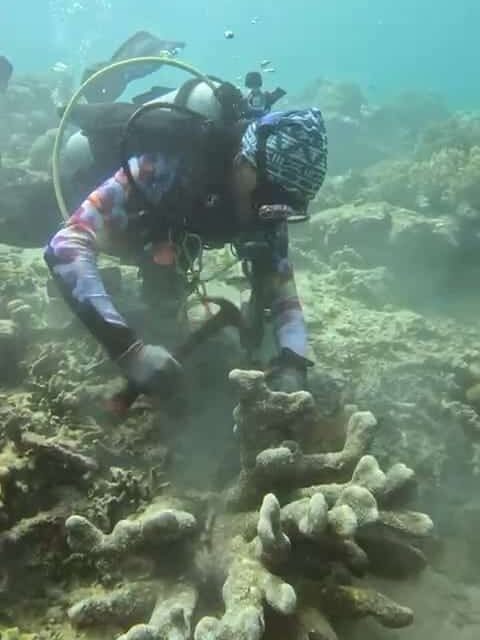
We together built a classic Nusa Penida style nursery mainly used as a shallow water nursery, functioning both as a coral farm, and also as a wave breaker. We also outplanted fragments of Isopora, a genus mainly found in the shallows with strong wave action, acting as a natural wavebreaker. We planted 151 fragments of Isopora using the cement and nail methods.
For the nursery, we planted 770 fragments using species of Acropora and Montipora that can withstand the swells. In the last few days, we started the monitoring program, using 3D photogrammetry. We did the 3D Photogrammetry on a natural reef with good conditions that can be used as a control site.
We will compare the progress of our degraded area with the control area to see if we can eventually raise the degraded reef’s baseline to match the natural, pristine area.
Raja Ampat Could Be Coral’s Last Hope
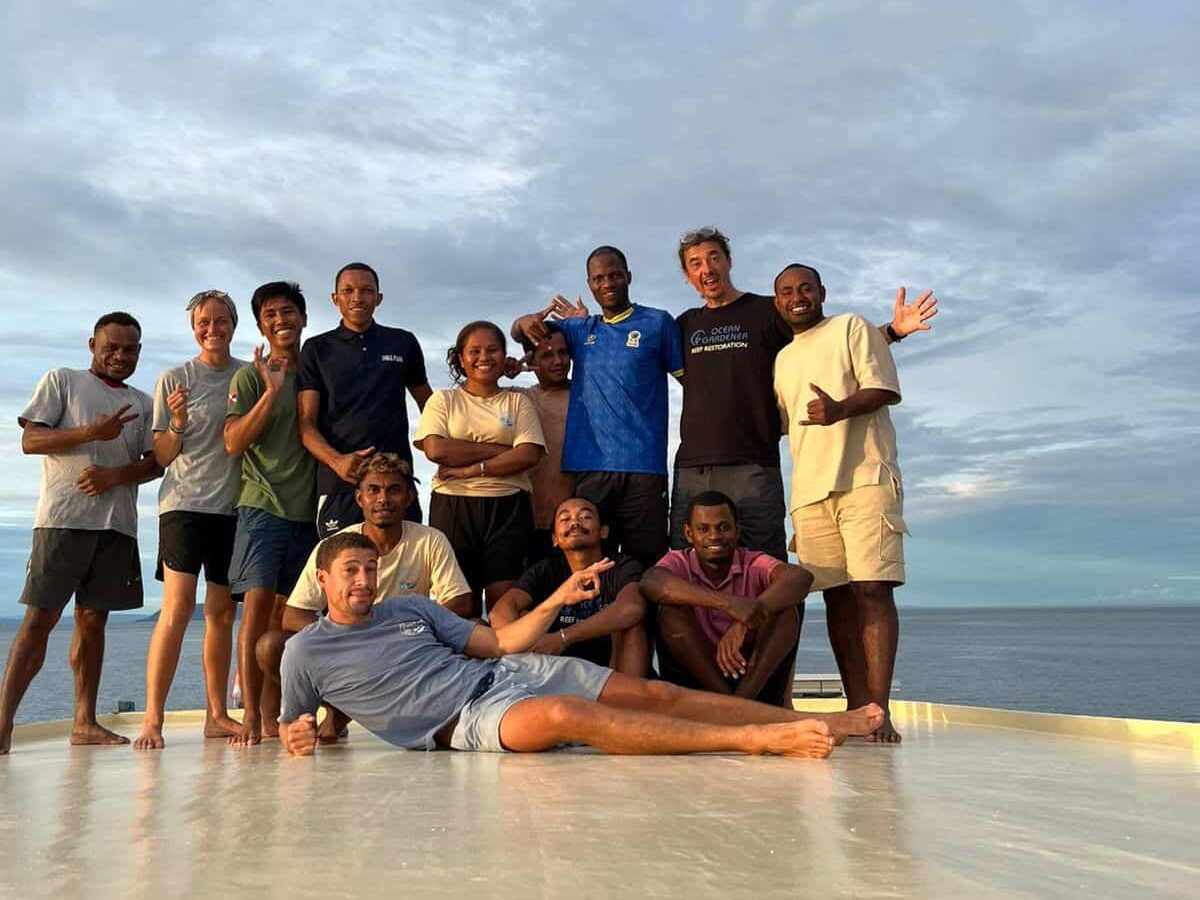
Our 4 weeks course in Raja is now finished and in total, together with all the NGO that were present and collaborated, we successfully installed 7 metal spiders, 150 square meters of Substrate Stabilization Mesh, 27 square meters of rope nurseries, and one metal nursery racks, outplanted 714 fragments in various areas, and managed to put 2313 coral fragments in the various nurseries. We are very happy with these results.
Apart from the numbers, the knowledge we shared to our partners is the most important part of the course. Together with The Sea People, The Ropes of Hope, Anambas Foundation and SMILO, we believe that there is still hope for Raja Ampat amidst of the expansion mining, proliferation of sewage, coral bleaching from climate change and increased reef damage for the tourism explosion.
Our Total Impact
STRUCTURES
- 7 metal spiders planted
- 150 square meter of mesh installed
- 27 sm for the rope nursery
- One metal structor 2mx5x 1meter hight
CORAL FRAGMENT PLANTED
- 384 fragments planted – Sapokren Reef
- 151 cement and nail corals planted – Dayang reef
- 179 planted into the mesh – Yenbekwan
NURSERIES
- 770 corals shallow Rope nursery Dayang
- 400 corals for ropes and poles – Yenbekwan,
- 1103 corals for Rope and metal structure – Yenbekwan
- 40 Cement cookies – Yenbekwan
- Total 3027 new coral fragments
COTS
- 82 Crown of thorns of starfish removed
Most of Raja Ampat is still pristine. We hope by educating a new generation of coral advocates, they can take their knowledge back to the local communities and make positive change – to educate their neighbors of the dangers of untreated waste water. To push for simple water treatment solutions like constructed wetlands. To conserve the reefs that people come to see and restore the reefs already damaged to their once pristine condition.
With the help of local communities everywhere all around the globe, we believe that together, we can fight for a better future for the coral reefs around the world.
This course will now be an annual event. If you wish to join us and sail on the Galaxea, planting coral with us, please contact us!